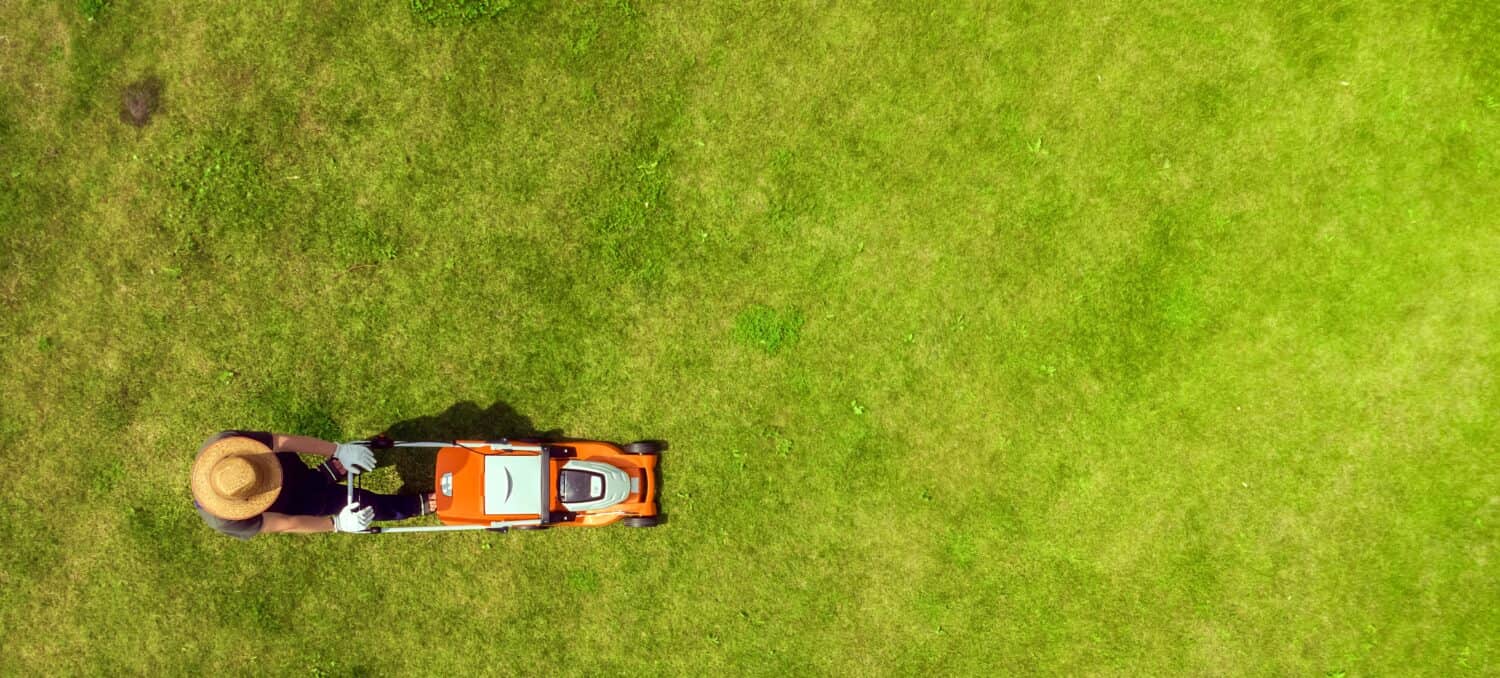So, you’ve decided that your yard needs a makeover, and with one look at your lawn, you realize that you know exactly where to start. A well-maintained, plush, and healthy lawn can be a source of pride for you as a homeowner. The positive comments from your family, friends, and neighbors about your yard will make you feel appreciated and recognized for your hard work and efforts in keeping your property in impeccable condition.

Regarding your front lawn, you want to create an environment that delights on-lookers, and you want your house to set the standard for curb appeal in the area. Concerning your backyard, you want your lawn to be inviting to those you will entertain there.
Let’s explore 7 grass types that will thrive in Florida yards!
1. Bermuda Grass
The texture of Bermuda grass is generally fine to medium, and it forms a dense, lush carpet-like surface when properly maintained. Bermuda grass is a warm-season grass thriving in hot and humid climates like Florida. This grass type will thrive in Florida yards due to its ability to tolerate high temperatures, drought, and salt, which makes it ideal for most yards along the coast. Bermuda grass also thrives fairly happily under heavy foot traffic.
Bermuda grass thrives in sandy loam or sandy soils with good drainage. In addition, this grass type can tolerate slightly acidic to slightly alkaline soils. These soil types allow water to pass through easily, preventing soggy conditions that can harm the grass.
During the cooler months, Bermuda grass goes dormant, and you should not apply fertilizer during this stage. Mowing your lawn at the correct height and avoiding over-watering can help prevent the development of pests and diseases, which can be expensive to rectify.
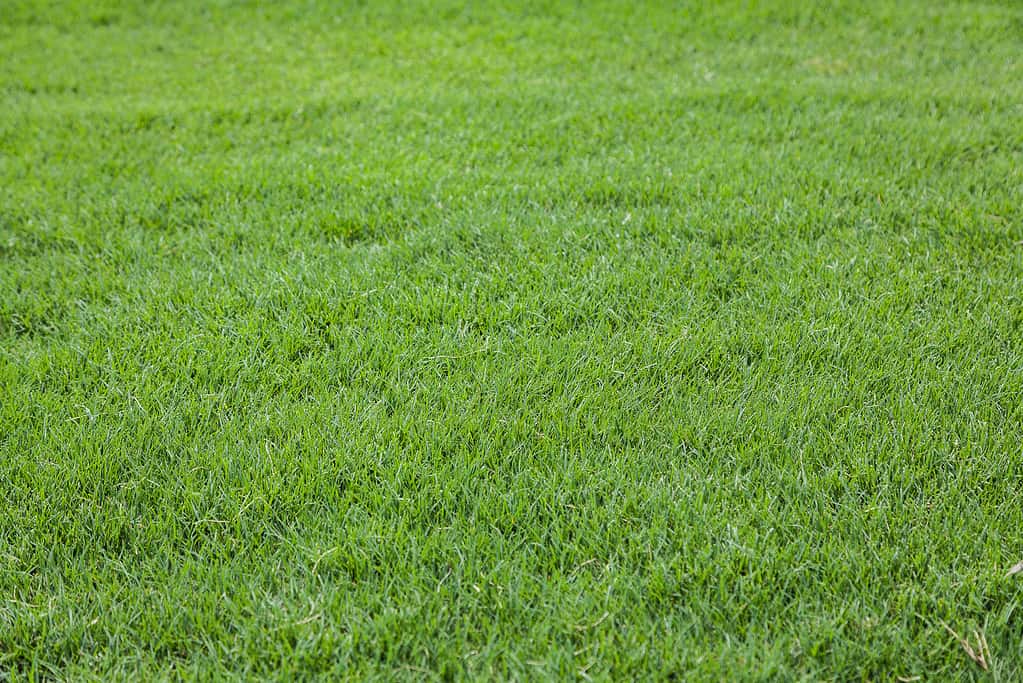
This close-up of Bermuda grass shows just how lush and green it can be for a perfect summer lawn.
©iStock.com/JPratt
2. St. Augustine Grass
St. Augustine grass is a fast-growing grass in Florida’s hot and humid climate which provides favorable conditions for rapid growth during the warm months. This grass type has a broader and coarser leaf blade than Bermuda grass. Its thicker blades contribute to its ability to handle foot traffic well, making it an ideal grass type that thrives in Florida yards.
One of the advantages of St. Augustine grass is its shade tolerance, which can be useful in parts of Florida where trees and other structures may cast shadows on the lawn. However, you must ensure that it receives enough direct sunlight because it tends to be more susceptible to certain diseases and pests when compared to Bermuda grass.
This grass type prefers well-draining soils, slightly acidic to neutral pH, and rich in organic matter. Regularly fertilize this grass and apply sufficient water to ensure a healthy lawn. However, be careful, as over-watering will lead to brown patches and root rot.
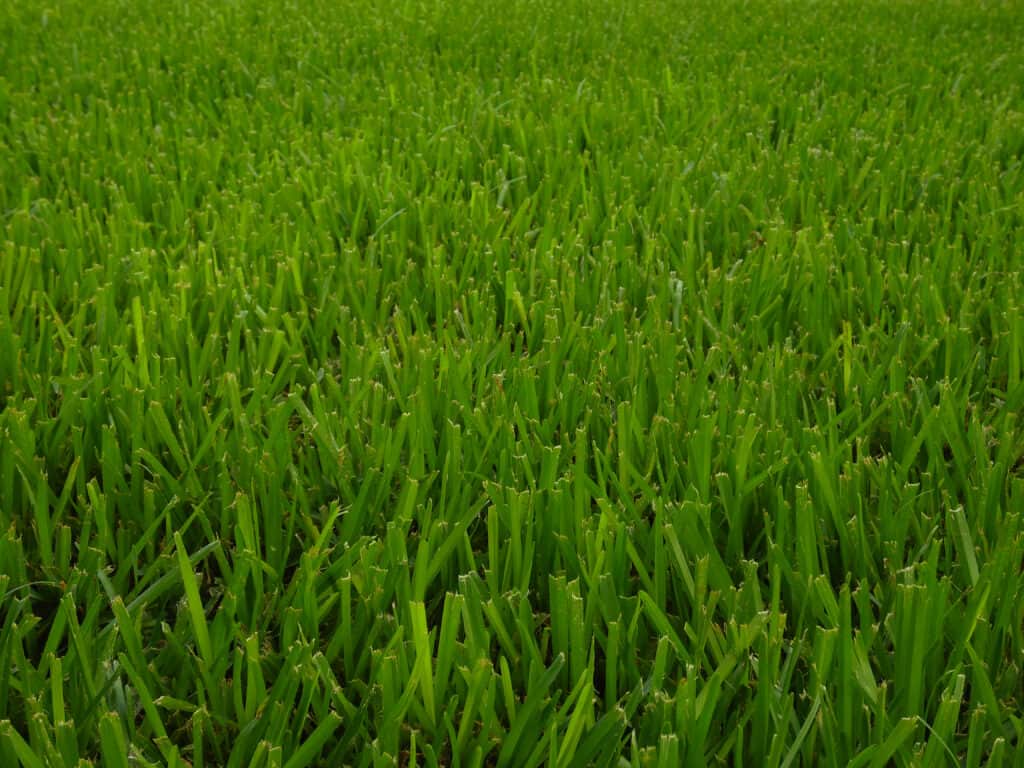
One of the best qualities of St. Augustine grass is its shade tolerance and coarse texture.
©Xeres Zales/Shutterstock.com
3. Zoysia Grass
The leaf blades of Zoysia grass are thin and narrow, giving it a fine appearance. This texture contributes to its attractive appearance and makes it a popular choice for lawns and landscapes in Florida. When properly maintained, this grass type forms a dense and lush turf and can provide a uniform and visually appealing lawn in your yard.
Zoysia grass tolerates heat and humidity well and has good drought tolerance properties, making it suitable for areas with limited water availability. Additionally, Zoysia grass is known for recovering quickly from wear and damage caused by heavy foot traffic. Overall, Zoysia grass’s fine to medium texture makes it a desirable option for homeowners and landscapers seeking a visually appealing and resilient lawn in Florida’s warm and often challenging climate.
The ideal soil type for Zoysia grass is typically well-draining sandy loam or loamy soil. A slow-release fertilizer must be applied during the warmer growing season.
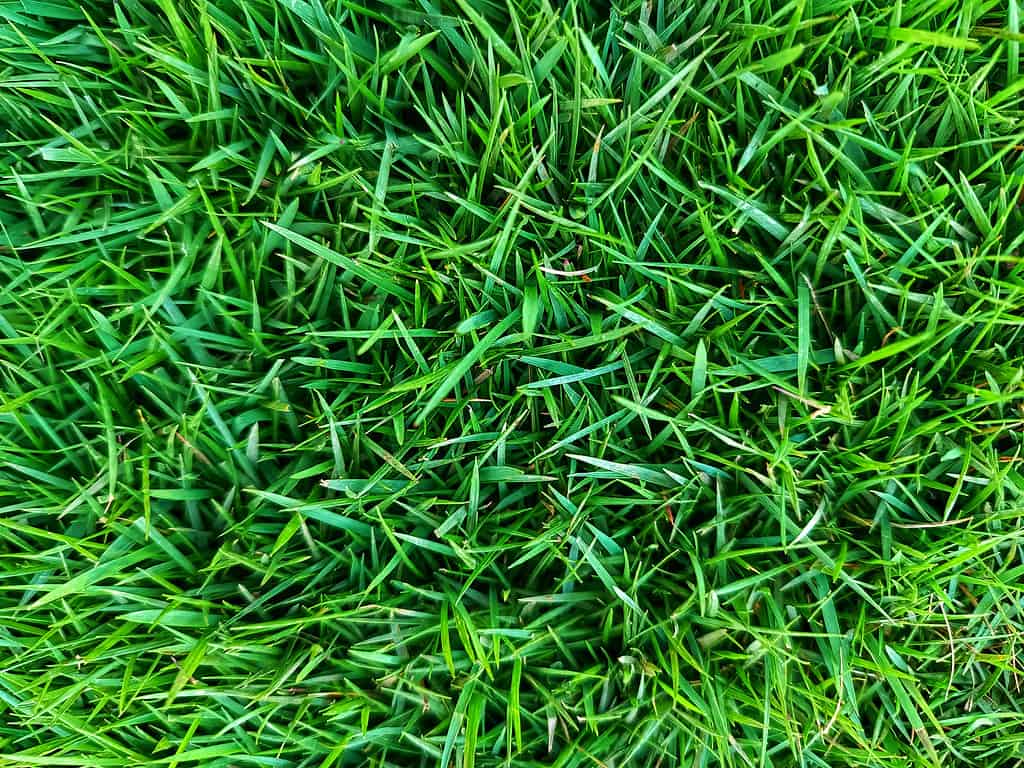
Zoysia grass has thin and narrow blades giving it a beautiful fine texture.
©iStock.com/HendSTD
4. Bahiagrass
Bahiagrass has coarse, wiry leaves that are harder underfoot than the other softer grasses grown in Florida. These characteristics make Bahiagrass less suitable for recreational lawns in yards that require a more refined appearance. So, if you’re looking for a smooth, carpet-like lawn, you should rather grow some of the other soft-leaf grasses. On the other hand, if you have a large yard, Bahiagrass will be suited because of its toughness and requires very little maintenance.
Bahiagrass grows best in full sun and is a very drought-resistant grass and does well in sandy loam soil that is slightly acidic but also grows in most other soil types. You can apply fertilizer from spring through fall to stimulate faster growth.
The main disadvantage of growing Bahiagrass is the tough, tall seedheads it develops during the growth season. These stalks cause increased wear on lawnmowers. In addition, this makes the grass unpleasant to walk on.
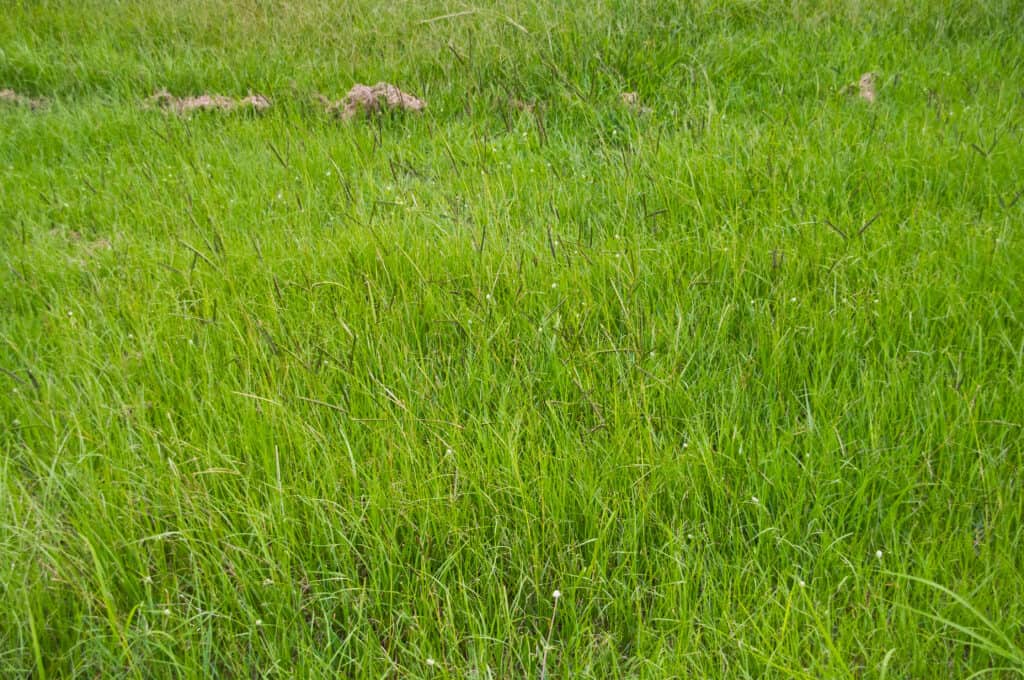
As a tough and coarse grass, Bahiagrass is durable and drought-resistant.
©John Robert McPherson, CC BY-SA 4.0, via Wikimedia Commons – Original / License
5. Centipedegrass
The leaves of Centipedegrass are soft and slender. These properties make this grass a favorite when a more refined, manicured lawn is desired. When you compare Centipedegrass with coarser grasses like Bahiagrass, you will find it softer, more pleasant underfoot, and well-suited for residential gardens and entertainment areas around your house. The grass growth is dense, which curbs the growth of weeds in your lawn patch.
Centipedegrass grows well in sandy, well-drained soil and deals with drought by entering a dormant stage. This grass type prefers at least six hours of direct sunlight, and it will be happy with some shade but will not thrive in full shade. To keep the soil cool and promote root development, you should set the mowing height slightly higher than the height for other grass types.
Although you may enjoy this grass type’s refined, lush appearance, the delicate leaves will not handle heavy foot traffic well.

Centipedegrass will thrive in 6 hours or more of sunlight.
©Sherry Barr Photography/Shutterstock.com
6. Buffalo Grass
Buffalo grass is known for its deep green, densely grown texture. In Florida, Buffalo grass is mostly popular in the Miami area and other southern parts of Florida. As a grass type native to the Great Plains of the United States, it is best suited for hot and dry climatic conditions. This type of grass does not grow well in the shade. So, if you have big trees in your yard, Buffalo grass will not do the trick for you.
Overwatering is a definite no-no and poses a risk to the health of this grass type. Too much water leads to the weakening of the grass, which makes it prone to pests and diseases.
You may experience problems with the cultivation and maintenance of Buffalo grass in most areas of Florida due to the general climate of the state. There are many other more suitable grass types to choose from.
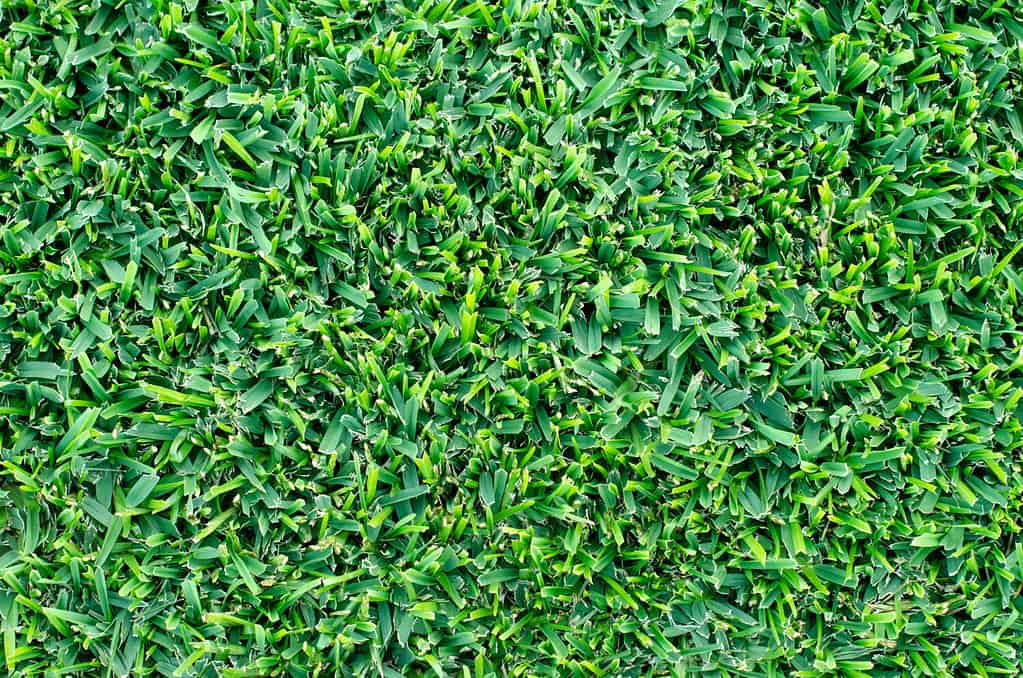
Another great choice for Florida lawns is
Buffalo
grass because they prefer hot, dry climates.
©doublelee/Shutterstock.com
7. Seashore Paspalum
Seashore Paspalum is a warm-season, salt-tolerant grass commonly used for turf in coastal areas. It is known for its lush fine texture, and the narrow grass blades provide a soft and smooth appearance. The grass blades are typically medium to dark green, and they can form a dense mat that provides excellent coverage and a pleasing visual appearance.
Seashore Paspalum is known for its ability to recover quickly from wear and tear, making it a popular choice for golf courses, sports fields, and residential lawns in coastal areas of Florida.
The downside of Seashore Paspalum Grass is that it has been reported as an invasive species, especially in coastal and wetland ecosystems where it can disrupt natural habitats. During long periods of high humidity and moisture, this grass type can be susceptible to diseases like dollar spot, brown patch, and various leaf spot fungi.
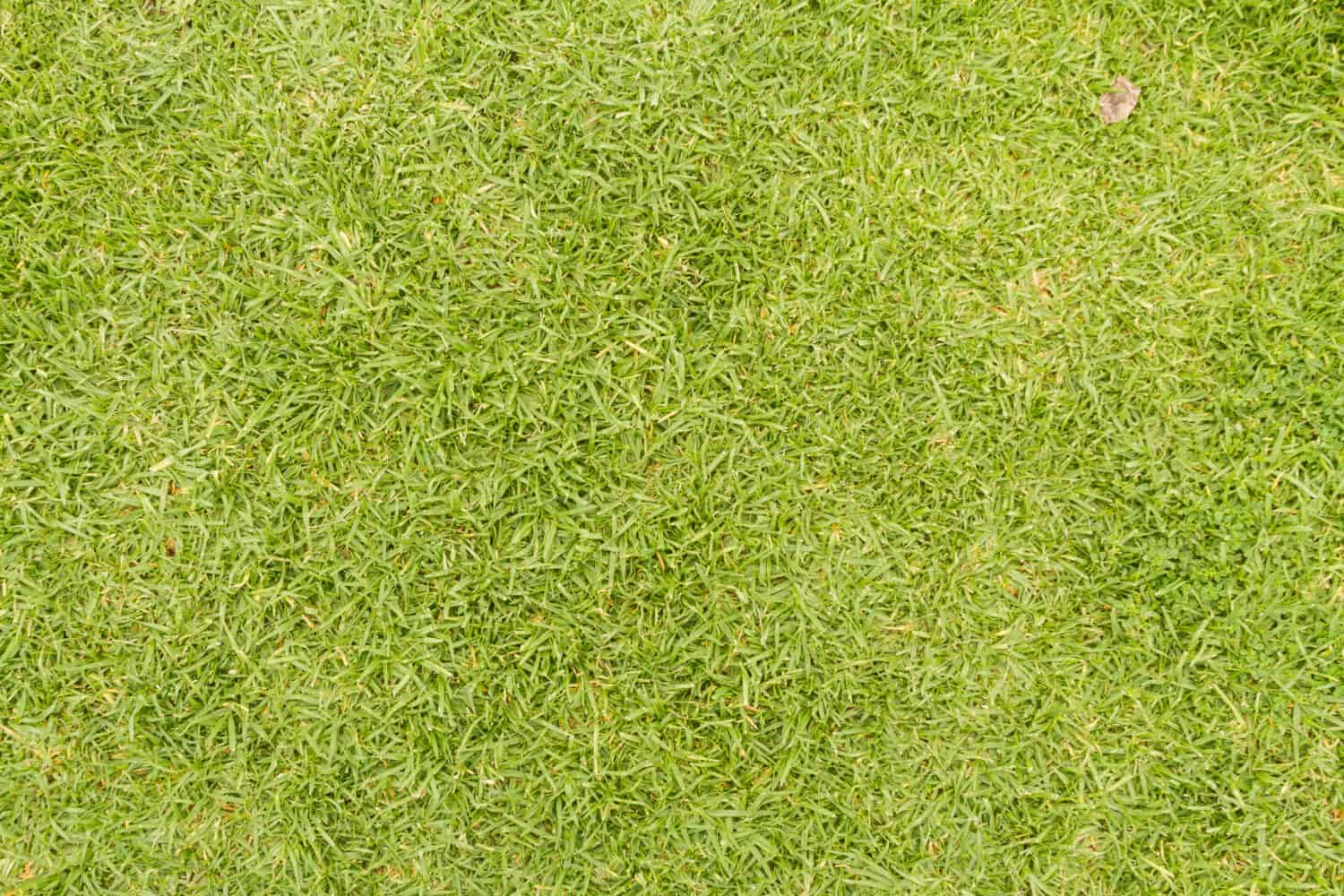
If you live near the ocean, Seashore Paspalum is an excellent grass type to cover your yard with.
©Simon Mayer/Shutterstock.com
Summary of 7 Grass Types That Thrive in Florida Yards
| Grass Type | Soil Type | |
|---|---|---|
| 1 | Bermudagrass | Sandy loam and sandy soil with good drainage |
| 2 | St. Augustine Grass | Well-draining, slightly acidic to neutral pH, and rich in organic matter |
| 3 | Zoysia Grass | Well-draining sandy loam or loamy soil |
| 4 | Bahiagrass | Sandy, slightly acidic soil |
| 5 | Centipedegrass | Well-draining sandy, acidic soil |
| 6 | Buffalo Grass | Well-draining sandy loam to clay loam soil |
| 7 | Seashore Paspalum | Sandy soils with good drainage and moderate to high salinity levels |
Thank you for reading! Have some feedback for us? Contact the AZ Animals editorial team.

